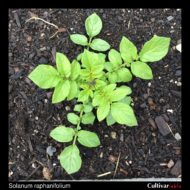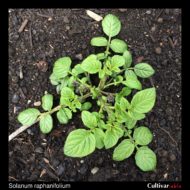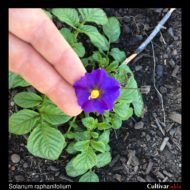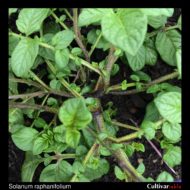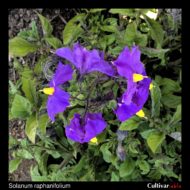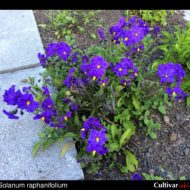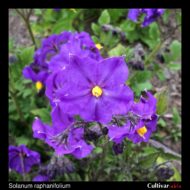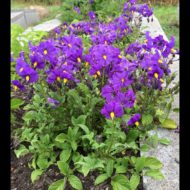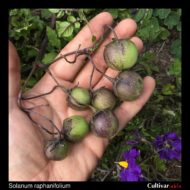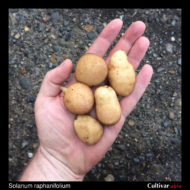No products in the cart.
Solanum raphanifolium
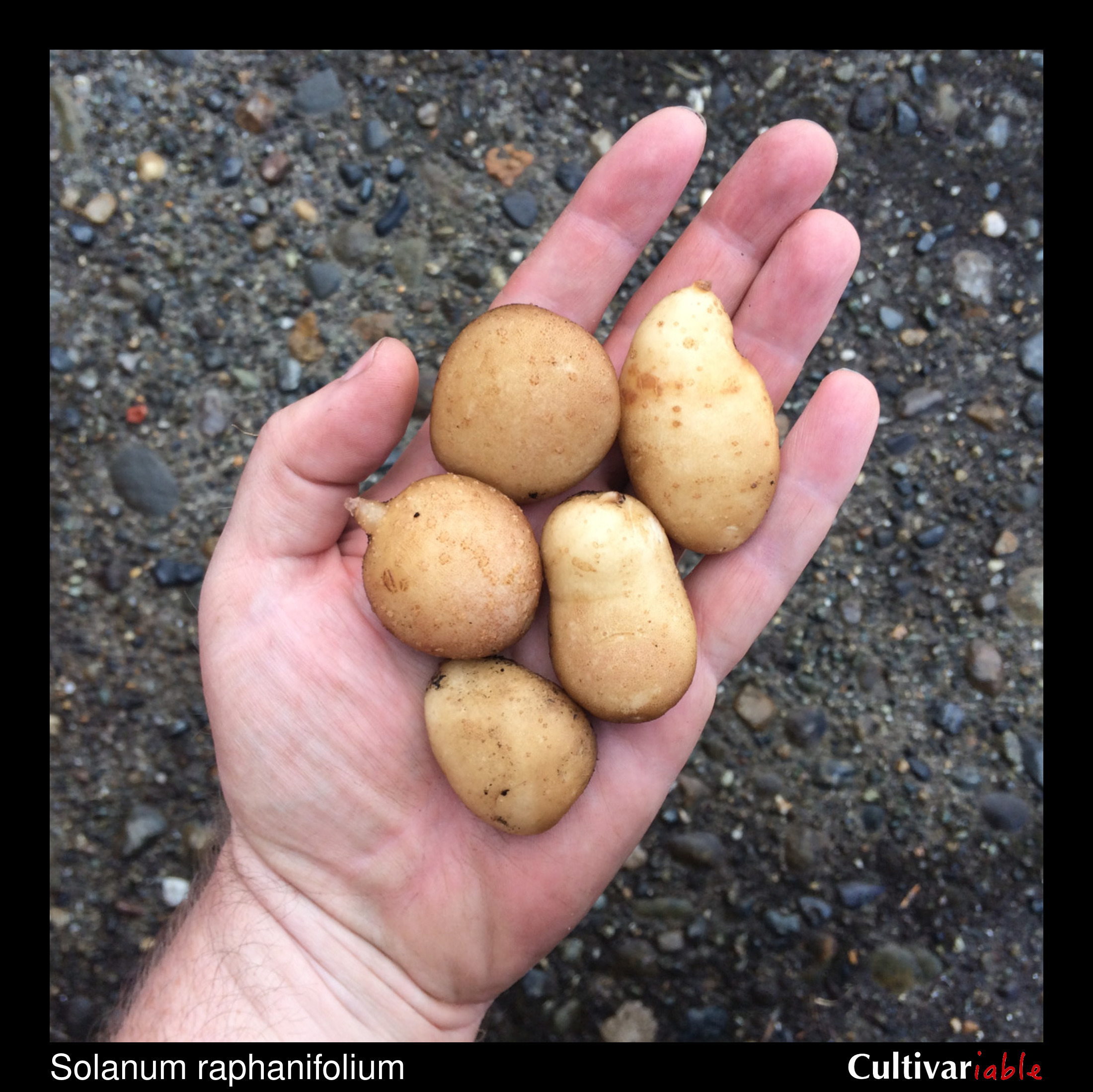
| Common Names | |
| Code | rap |
| Synonyms | S. hawkesii |
| Clade | 4 |
| Series | Megistacroloba |
| Ploidy | Diploid (2x) |
| EBN | 2 |
| Tuberization Photoperiod | Short Day |
| Self-compatibility | No |
| Nuclear Genome | A |
| Cytoplasmic Genome | M |
| Citation | Cardenas and Hawkes: J. Linn. Soc. London 53: 94. 1946. |
Description
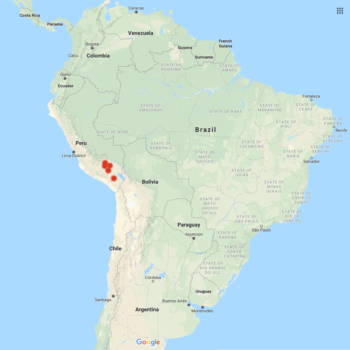 Solanum raphanifolium is a wild potato species from southern Peru. This species can survive frosts down to 26 degrees F (-3.5 C) (Li 1977). Vega (1995) found that this species is more frost tolerant than domesticated potato.
Solanum raphanifolium is a wild potato species from southern Peru. This species can survive frosts down to 26 degrees F (-3.5 C) (Li 1977). Vega (1995) found that this species is more frost tolerant than domesticated potato.
The specific epithet, raphanifolium, means “radish-leaved,” referring to the shape of the foliage. It is formed from the Latin words “raphanus,” for “radish,” and “folium,” for leaf.” While there is no completely standardized pronunciation for scientific names, the most common way to pronounce this species is probably so-LAY-num ra-fan-i-FO-lee-um.
This species has very attractive, large, and abundant flowers and might have some potential as an ornamental.
Kiszonas (2010) measured the tuber pH of wild potato species and found that S. raphanifolium has the highest pH among species tested, at 6.07, tying with phureja type domesticated potatoes. It is not known if tuber pH has any agronomic significance.
| Condition | Type | Level of Resistance | Source |
|---|---|---|---|
| Alternaria solani (Early Blight) | Fungus | Somewhat resistant | Jansky 2008 |
| Drought | Abiotic | Somewhat resistant | Machida-Hirano 2015 |
| Frost | Abiotic | Somewhat resistant | Machida-Hirano 2015 |
| Globodera pallida (Pale Cyst Nematode) | Invertebrate | Not resistant | Castelli 2003 |
| Globodera pallida (Pale Cyst Nematode) | Invertebrate | Not resistant | Bachmann-Pfabe 2019 |
| Globodera rostochiensis (Potato Cyst/Golden Nematode) | Invertebrate | Somewhat resistant | Castelli 2003 |
| Heat | Abiotic | Somewhat resistant | Machida-Hirano 2015 |
| Meloidogyne incognita (Root Knot Nematode) | Invertebrate | Resistant | Nirula 1967 |
| Meloidogyne spp. (Root Knot Nematode) | Invertebrate | Somewhat resistant | Machida-Hirano 2015 |
| Pectobacterium carotovorum (Blackleg/Soft Rot) | Bacteria | Somewhat resistant | Chung 2011 |
| Phytophthora infestans (Late Blight) | Fungus | Resistant | Gonzales 2002 |
| Phytophthora infestans (Late Blight) | Fungus | Somewhat resistant | Bachmann-Pfabe 2019 |
| Potato Leaf Roll Virus (PLRV) | Virus | Somewhat resistant | Machida-Hirano 2015 |
| Potato Virus Y (PVY) | Virus | Not resistant | Cai 2011 |
| Synchytrium endobioticum (Wart) | Fungus | Somewhat resistant | Machida-Hirano 2015 |
Glykoalkaloid content
Johns (1986b,1990) found glycoalkaloid levels ranging from 28 to 70mg/100g for five accessions of S. raphanifolium. The primary glycoalkaloids were solanine and chaconine. The lower end of this range is close to the safety zone, so it may be possible to select edible varieties of this species.
Images
Cultivation
I have found this species slow and difficult to germinate. It may require different conditions than the standard for S. tuberosum.
Towill (1983) found that seeds of this species stored at 1 to 3 degrees C germinated at 90 to 100% after 16 years.
Breeding
Crosses with S. tuberosum
S. raphanifolium has been used in domesticated potato breeding, including the varieties Krantz (Plaisted 1989), Itasca, and Russet Nugget (Love 1999).
| Female | Male | Berry Set | Seed Set | Ploidy | Germ | Source |
|---|---|---|---|---|---|---|
| S. tuberosum | S. raphanifolium | Low | Low | Jackson (1999) | ||
| S. raphanifolium | S. tuberosum | None | None | Jackson (1999) | ||
Crosses with other species
Jackson (1999) found 7-33% 2n pollen for varieties of this species.
| Female | Male | Berry Set | Seed Set | Ploidy | Germ | Source |
|---|---|---|---|---|---|---|
References
Solanum raphanifolium at Solanaceae Source

